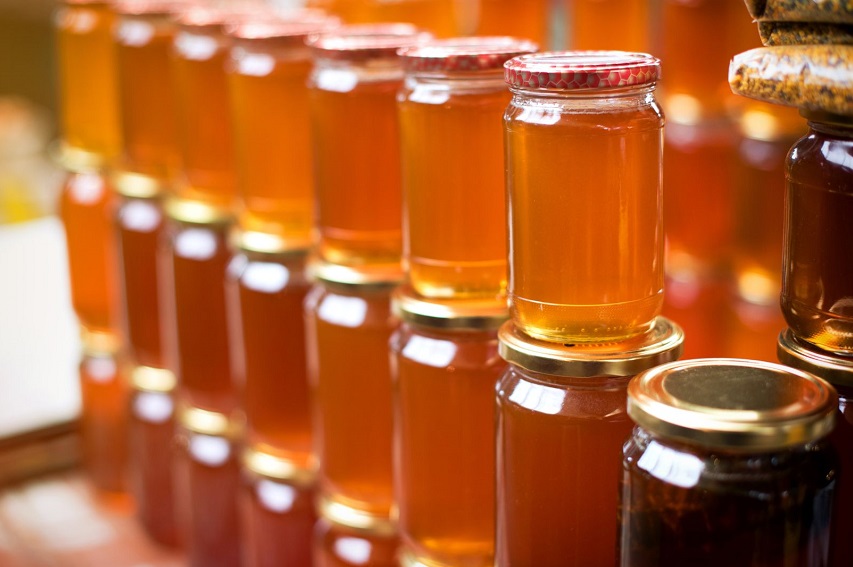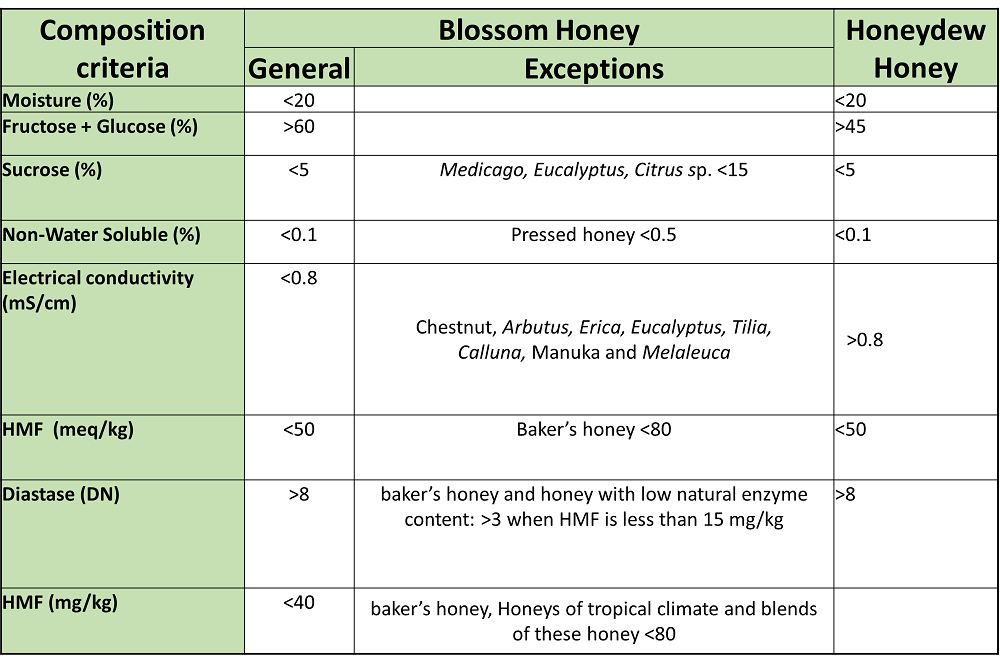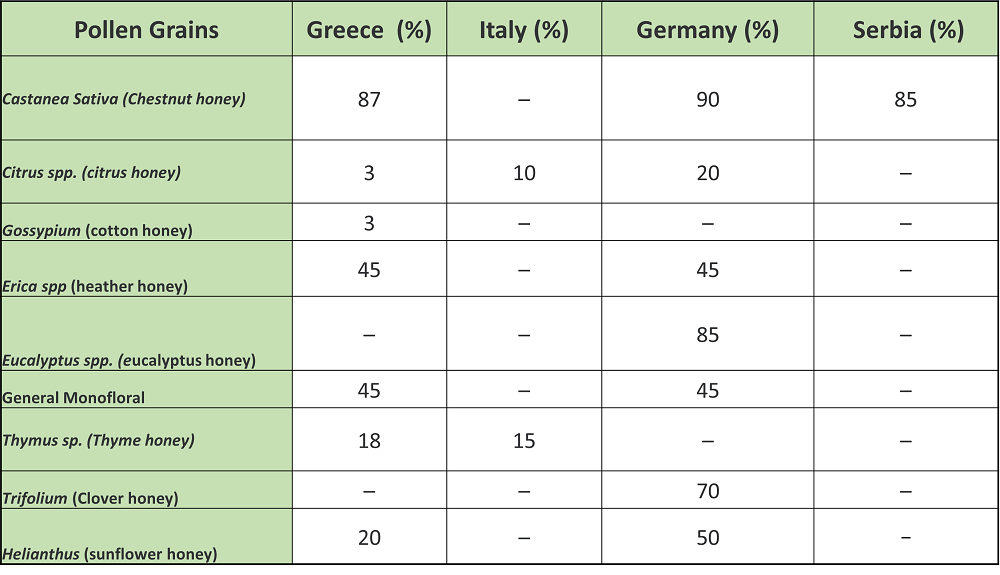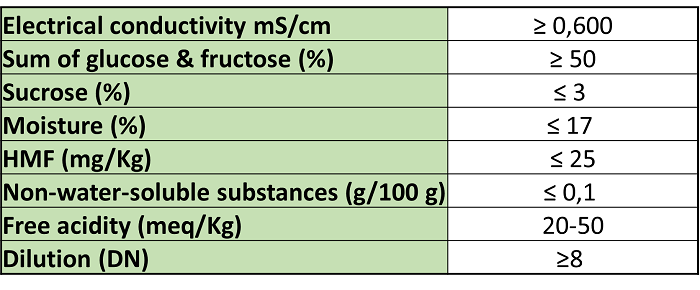Honey Legislation: Parameters, Criteria & Limits

This post is also available in:
This post is also available in:
![]() Español (Spanish)
Español (Spanish) ![]() Français (French)
Français (French) ![]() Ελληνικά (Greek)
Ελληνικά (Greek) ![]() Português (Portuguese (Brazil))
Português (Portuguese (Brazil))
What you need to know to sell your honey in the local and global market
In order for beekeepers to sell their honey products in the market, they need to comply with specific labelling and quality criteria. This may include providing information about the honey’s weight, origin, and producer, as well as meeting specific quality standards related to moisture content, colour, and flavour. Compliance with food safety regulations and restrictions on the use of certain chemicals in honey production may also be required. By meeting these criteria, beekeepers can ensure that their honey products are safe, authentic, and high-quality and can build trust with their customers.
Legislation regarding honey varies by country but typically involves regulations on labelling, composition, and quality standards.
For example, in the United States, honey must be labelled with its weight, country of origin, and the packer’s or distributor’s name and address. It must also meet specific quality standards, such as having a moisture content of less than 18.6% and not containing any added substances except for honey produced by bees.
The European directive 2001/110/EC and the Codex Alimentarius are laying down the production and parameters of honey within the EU’s Member States.
According to Codex Alimentarius, consumers have the right to receive truthful information about the food they will consume.
It is also mentioned that honey should not:
- have any added ingredients,
- have any foreign matter, flavor, aroma, or taint absorbed from foreign substances during processing and storage,
- have nor any removal of a particular constituent.
- be heated or processed to such an extent that its essential composition is changed and its quality impaired.
Some of the parameters laid down in the legislation are:
- Moisture content: the moisture content should not exceed 20% for the majority of honeys, 23% for heather honey and 18.5% for fir honey. The extra moisture influence the quality of the product as it make it susceptible to fermentation.
- Content of non-water-soluble substances: Generally, not more than 0.1% and for pressure honey not more than 0.5%. Therefore, beware of producers who leave residues in their honey for various reasons, as the legislation does not allow this.
- Fructose and glucose content: They are the good sugars in honey, so the legislation requires their sum to be greater than 60% for flower honey or 45% for honeydew honey or honeydew-flower mixture. The reason for this difference is that honeydew honey naturally contains fewer sugars.
- Electrical Conductivity: An important parameter for the classification of honey even though there is a lot of confusion with this parameter. There is a special classification depending on the type of honey. Generally, what is true is that honeydew honey should have a conductivity greater than 0.8 mS/cm while flower honey conductivity should be less than 0.8 mS/cm. Exceptions to this rule include honey of heather (Erica), eucalyptus, lily of the valley (Tilia spp.), manuka (Leptospermum), tea tree (Melaleuca spp.) which may have conductivity greater than 0.8 mS/cm. Thus pine honey must have a conductivity >0.9 mS/cm, fir honey >1.0 mS/cm, chestnut honey >1.1 mS/cm, thyme honey <0.6 mS/cm and orange honey <0.45 mS/cm.
- Sucrose content: The sucrose content shall not exceed 5%. Sucrose is at high levels when bee feeds are used, especially when bee feeds are added incorrectly. Due to good practiceσ by beekeepers in Greek honey, sucrose content rarely exceeds 1%.
- Hydroxymethylfurfural (HMF content): The maximum value is 40 mg/kg. Crystallized honey that has been heated has a high HMF value. Also, high HMF values are found in honey where beekeepers have used forage, while increased, but low values are found in aged honey.
- Diastase activity: honey should have a value greater than 8, except orange honey which should have a value >3. The diastasis decreases with heating processes. The diastase in combination with the sucrose value and the HMF value can be an indicator of adulteration.
- Free acids: Their value should not exceed 50 meq/kg sample. Increased acidity is found in honeydew honey and aged honey.
- Hygroscopic analysis: This is necessary when the honey is labelled as to its botanical origin (e.g. thyme honey, pine honey, etc.).
- Nutritional labelling: honey is a natural product, so according to EU Regulation 1169/2011, no nutritional labelling is required. However, there are cases where this is required, such as export to the USA and Canada, where the following analyses are also required: Vitamin D, calcium, potassium and iron.
- Additional analyses: Depending on the country of handling or export, you may also be asked for an analysis of pesticides and antibiotics that may have been used to combat varroa and other cases.

Table 1: Compositions Criteria as laid down in the Directive 2001/110 EU*Honeydew honey and blends of honeydew honey with blossom honey (The Toxic Impact of honey adulteration: A review)
The table below (Table 2) presents the minimum percentage of pollen required for the characterization of monofloral honey in four European countries according to their national legislation (provisions, decisions, guidelines).

Table 2: Minimum percentage of pollen required for the characterization of monofloral honey in four European countries ( The Toxic Impact of honey adulteration: A review)
In Greece, 2 types of honey have received PDO recognition.
The “Menalou Vanilia fir honey” the “Peukothimaromelo of Crete”.
Regarding “Menalou Vanilia fir honey”, the main component must be at least 80% fir honey. The rest of the honey must be made up of flower honey (not more than 20%) from local flowers.
The sucrose content of the honey must be above 10 %, with a variation of 8-18 %. The moisture content of this honey should be between 14,0 % and 15,5 %. This honey must be produced in 25 areas of the Arcadia region (Peloponnese).
“Peukothimaromelo of Crete” is a natural blend of thyme honey with pine honey and is produced from the specific beekeeping practices of the beehives or the coexistence of late blooming thyme with honey secretions from the insect Marchalina hellenica, which mainly parasitizes mainly on pine (Pinus brutia, Pinus halepensis).
The quality attributes of this honey are presented below:

The main pollen is from thyme (Thymus capitatus), which is present in all samples of honey with organoleptic characteristics of Peukothimaromelo in a percentage greater than or equal to 10 %. In addition to the thyme gyreococcus, it also contains a large number of other 15 to 20 different local species.
*Baker’s honey (Industrial honey): It is the honey that doesn’t completely meet the criteria of table honey. The HMF content of Baker’s honey is allowed to be higher than 40mg/kg, which isn’t the case in other types of honey.
References
Andreas Thrasyvoulou, Chrysoula Tananaki, Georgios Goras, Emmanuel Karazafiris, Maria Dimou, Vasilis Liolios, Dimitris Kanelis & Sofia Gounari (2018) Legislation of honey criteria and standards, Journal of Apicultural Research, 57:1, 88-96, DOI: 10.1080/00218839.2017.1411181
Fakhlaei R, Selamat J, Khatib A, Razis AFA, Sukor R, Ahmad S, Babadi AA. The Toxic Impact of Honey Adulteration: A Review. Foods. 2020; 9(11):1538. https://doi.org/10.3390/foods9111538
http://www.minagric.gr/images/stories/docs/agrotis/MeliMelissokomia/KYA_Taytopoiisi_.pdf
https://www.moh.gov.cy/moh/mphs/phs.nsf/202018.pdf
https://pasiaslab.gr/blog-articles/289-analyseis-melioy-ti-provlepei-i-nomothesia
EC. (2001). Council directive 2001/110/EC of 20 December 2001 relating honey. Official Journal of the European Communities 12.1.2002 L10/47-52.
EU. (2005). Explanatory note on the implementation of council directive 2001/110/EC relating to honey. Brussels, D (2005) 9538 Note expl.61913.Oct.2005.
Interesting Facts About Honey – Honey nutritional value
Which Factors Affect Honey Quality
Honey Types and their Characteristics
Honey Produced in Forests and Meadows
Honey Legislation: Parameters, Criteria & Limits








































































